Just before the pandemic Stephen Smith suggested an evening lock in to enjoy the pipe organ at Southwark Cathedral. Three years later we finally got a date in the diary. On a lovely sunny Monday in May, Richard Goodall and I took the train into Marylebone to attend evensong before the doors were closed so we could have the place to ourselves.
Stephen Smith – A passionate ambassador for the organ community
I first met Stephen when he accompanied his friend Colin to our Bicester showroom. Colin, with Stephen’s help, chose the Envoy 350 FV as his home practice organ. Sadly – following Colin’s far too early death – this instrument is now Stephen’s practice instrument.
Stephen is a passionate ambassador for the organ. He writes reviews of pipe organ rebuilds, runs some concert organists’ web sites, and is past president of the Atlantic City Boardwalk Hall Organ Society. He is also extraordinarily knowledgeable on many instruments as we were to find as we walked around Southwark. We were also hosted by Director of Music Ian Keatley, and Sub Organist Simon Hogan.
The Southwark Cathedral Pipe Organ
Evensong was a treat with the girls’ choir on parade. The repertoire had been chosen as part of The London Festival of Contemporary Church Music taking place that week. Hence, the setting of responses was by Kenneth Leighton, the canticles were Leighton’s Collegium Magdalene Oxoniensis, and the anthem was Philip Moore’s God’s wonderful works. Meanwhile, unfazed by both music and liturgy, the cathedral’s resident cat put in an occasional appearance.
The Southwark organ is far from visible in the Cathedral. The main part of the instrument is located on the south side of the choir in a large alcove that was formerly the chapel of St Mary Magdalene. However, the unenclosed choir division is at floor level immediately to the east side of the console on the north side of the choir stalls – so a considerable distance from the majority of the pipe work. Indeed, some of the softer pipework is hardly audible at the console and the sound totally lost for the musician if there is noisy activity in the nave. The console is also almost at floor level directly behind the north side choir stalls, another factor that denies the organist clear hearing of this instrument.
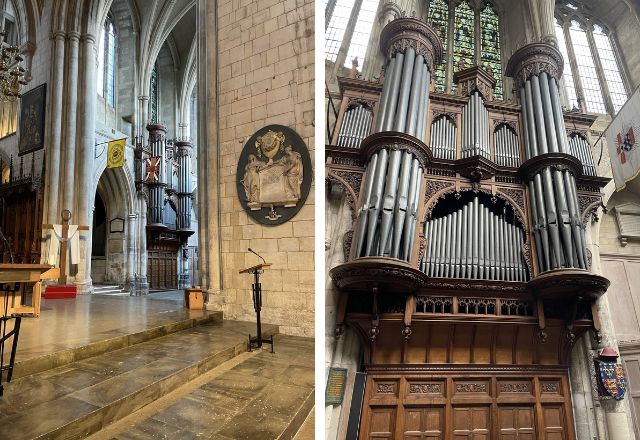
Some challenges with the organ sound
With almost no direct route for sound to travel from the south side case to the console some 10 metres away we begin to understand why some of the beautiful sound this instrument creates is not heard well by the organist. How all too often is that the case with many instruments. In fact, as happens with some other instruments, there are microphones in the nave to feed sound back via headphones to the organist.
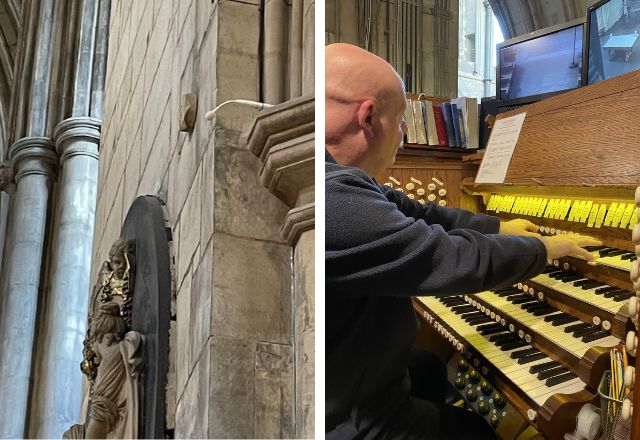
The instrument we find today was built originally by TC Lewis in 1897. The fine front casework whose pipes are mostly silent, and was designed by Sir Arthur Blomfield, sits in the south transept and is from the same date. There are two other large openings facing north from this corner location fronted with ranks of large unpainted metal pipes. The most westerly of these facades are also all dummy pipes. So the organ’s sound originating much deeper inside the former chapel space has to get past the mainly dummy façade before it can be heard.
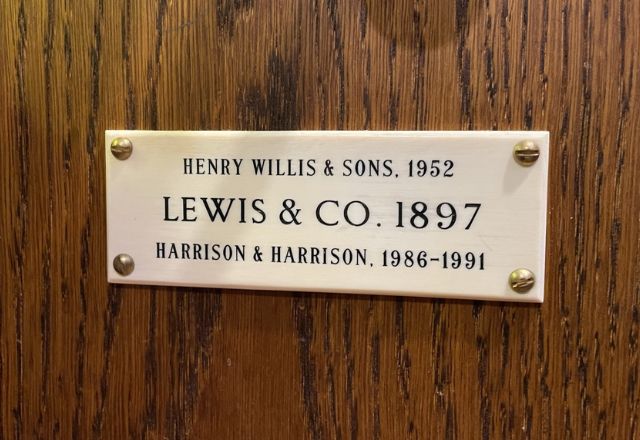
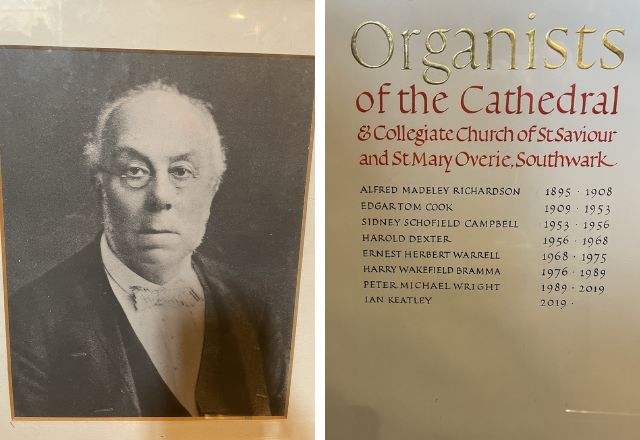
The organ pipework
Unlike many of our large cathedral instruments the Southwark front case pipes are undecorated, and visually quite low key in appearance apart from the use of spotted metal. Spotted metal is a mix of tin and lead that does not mix to form an alloy. As the metal cools the two metals separate and a crystal-like pattern appears in the solidified sheet that varies dependent upon the original proportions of the two metals. The ratio of lead to tin also affects tone, with a high lead content leading to a softer final mix that dampens the higher frequencies, leading to a softer sound.
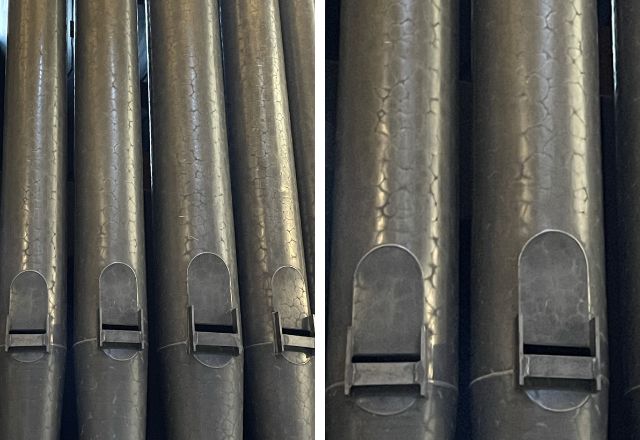
The Southwark instrument was largely possible through the generosity of John Courage of Courage’s Brewery. You can see from the memorial tablet below the pipework that the instrument’s build is dedicated to Robert Courage (John’s brother) by his widow Anne. The fact that John’s son was one of Lewis’s organ builders no doubt had some influence on this gift!
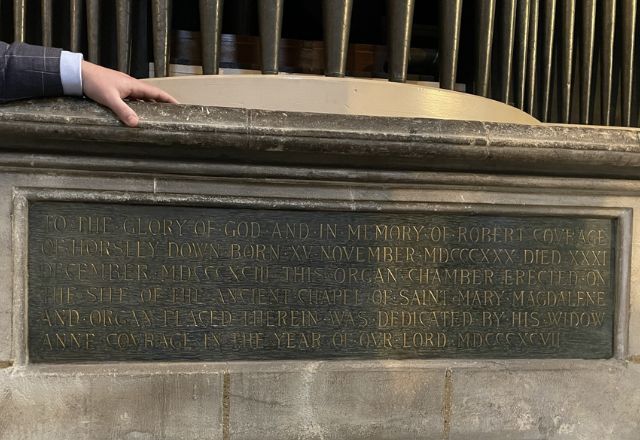
The organ has had almost no tonal changes since Lewis originally built it. A rebuild by Henry Willis III in 1952 added a 4 ft viola to the pedal department and lowered the pitch.
The organ console
A new console was also installed, which you see is distinctively in the Willis style with the abundance of sub and super couplers laid right across the console above the Solo manual. The eagle eyed amongst readers will also probably be surprised to see the instrument has only a 30 note pedalboard.
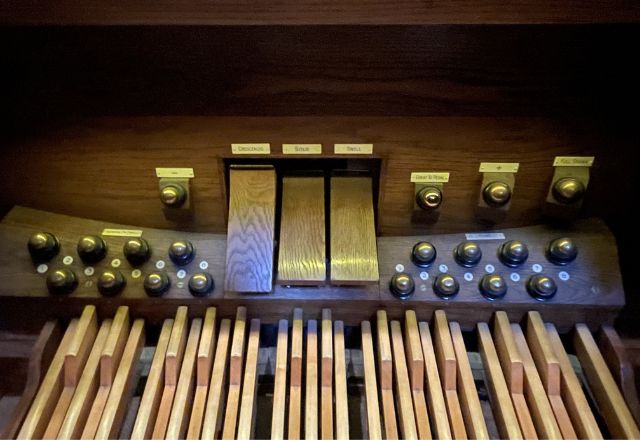
There is no gold standard today between choice of 30 or 32 notes and much less so 120 years ago. Lack of space no doubt had an influence on the pedal compass of this instrument, but as we know 30 notes covers almost 99% of the repertoire – so the additional two notes I am sure are hardly missed.
Harrison & Harrison reinstate the original sound
Harrison & Harrison have thereafter carried out work which included new electrical systems and the more complex job of returning the instrument to the original Lewis pitch, involving lengthening the pipes and altering wind pressures. However, all in all this is one of the least altered cathedral instruments in the UK with a remarkably interesting tonal design. It does whispering quiet extraordinarily well but can be built up to a magnificent full organ in the smoothest of crescendos.
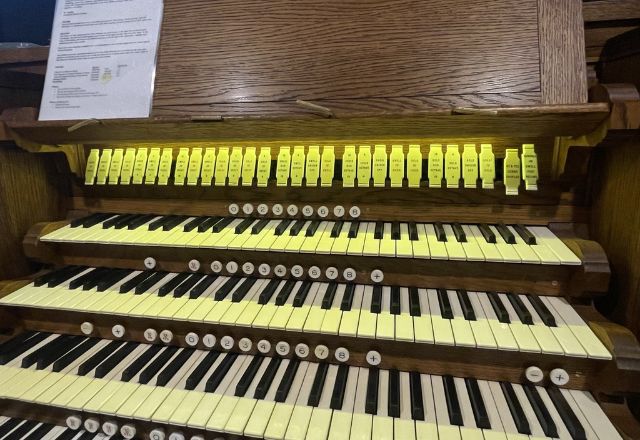
The diapason chorus is magnificently English with Open Diapasons 1 and 2 together producing a marvellously reassuring solid and smooth sound. I found the console very comfortable, and as usual knocked out some favourites from my very limited repertoire. I put the Tuba to good use with the Stanley Trumpet Tune and was quite pleased with the nice crescendo I pulled off in the Thalben-Ball Elegy, using just Swell and Great divisional pistons.
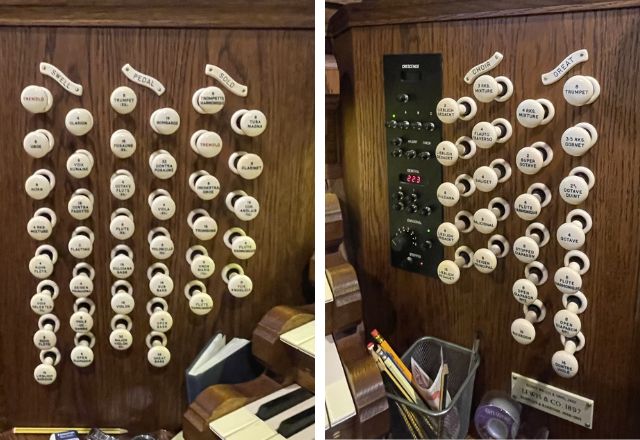
View the full organ specification.
Into the evening telling organ tales
All too soon the visit came to an end, and many thanks are due to Stephen, Ian and Simon for their hospitality. Stephen, Richard and I stepped back out into Borough Market on a lovely sunny evening and wasted no time to find a nearby pub and sink a couple of pints – while the inevitable tales of organs we have played and still yet hope to play carried on for a few hours more.
I have had a passion for church organs since the tender age of 12. I own and run Viscount Organs with a close attention to the detail that musicians appreciate; and a clear understanding of the benefits of digital technology and keeping to the traditional and emotional elements of organ playing.


